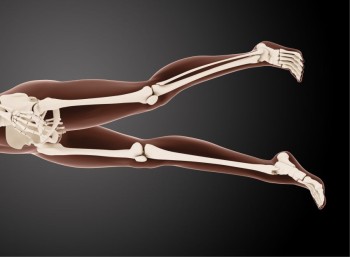
Barium Upper Gastrointestinal (GI) Tract X-ray is a diagnostic imaging procedure that involves the use of barium contrast material to visualize and assess the structures of the upper digestive system.
Barium Upper GI Tract X-ray with Cost
Barium Upper GI Tract X-ray in Detail
Introduction
Barium Upper Gastrointestinal (GI) Tract X-ray is a diagnostic imaging procedure that involves the use of barium contrast material to visualize and assess the structures of the upper digestive system.
Purpose and Procedure
The primary objective of Barium Upper GI Tract X-ray is to evaluate the esophagus, stomach, and the initial part of the small intestine. During the procedure, the patient ingests a barium-containing liquid, which acts as a contrast material. X-ray images are then captured, allowing healthcare professionals to observe the flow of barium through the upper GI tract.
Types of Barium Upper GI Tract X-ray
There are two main types: Single-Contrast Barium Upper GI Tract X-ray, which uses only barium, and Double-Contrast Barium Upper GI Tract X-ray, combining barium with gas to enhance imaging and provide a more detailed view of the digestive structures.
Indications and Contraindications
Barium Upper GI Tract X-ray is indicated for various conditions, including gastroesophageal reflux disease (GERD), swallowing difficulties, and ulcers. Contraindications may include allergies to barium or potential pregnancy. Healthcare providers carefully assess individual cases to determine the appropriateness of the procedure.
Risks and Safety Measures
While the risks associated with Barium Upper GI Tract X-ray are generally minimal, precautions are taken to ensure patient safety. Potential risks include constipation from the ingestion of barium. Healthcare professionals take necessary measures to mitigate these risks, and patients are often provided with post-procedure instructions.
Interpretation of Results
The interpretation of Barium Upper GI Tract X-ray results requires a comprehensive understanding of normal and abnormal findings within the upper digestive system. Radiologists collaborate with healthcare providers to analyze the images and identify any structural or functional abnormalities that may impact a patient's gastrointestinal health.
Comparison with Alternative Diagnostic Methods
Barium Upper GI Tract X-ray is often compared with alternative diagnostic methods, such as endoscopy, to highlight the unique advantages and limitations of each approach. The choice of diagnostic method depends on specific clinical indications and patient factors.
Technological
Advancements in Barium Imaging
Recent technological advancements in imaging equipment have improved the accuracy and efficiency of Barium Upper GI Tract X-ray. Digital imaging technology and enhanced contrast agents contribute to a more detailed and precise diagnostic process.
Common Misconceptions
Addressing common misconceptions surrounding Barium Upper GI Tract X-ray is crucial for ensuring informed decision-making by patients. Clarifying the safety and effectiveness of the procedure helps alleviate concerns and foster confidence in individuals undergoing the test.
Future Trends and Developments
The future of Barium Upper GI Tract X-ray holds promising possibilities, with ongoing advancements expected to enhance diagnostic precision and patient comfort. Anticipated developments may include further improvements in imaging technology and streamlined procedures.
Patient Experiences and
Testimonials
Personal stories from individuals who have undergone Barium Upper GI Tract X-ray provide valuable insights into the real-world impact of the procedure. These testimonials offer a human perspective on the patient experience and its role in their gastrointestinal diagnostic journey.
Conclusion
In conclusion, Barium Upper GI Tract X-ray stands as a pivotal tool in gastrointestinal diagnostics, providing essential information for healthcare professionals. Its diverse applications, coupled with ongoing technological improvements, make it an indispensable component of modern medical imaging.
FAQs (Frequently Asked Questions) about Barium Upper GI Tract X-ray
Is Barium Upper GI Tract X-ray painful?
The procedure is generally well-tolerated, and discomfort is minimal. Patients may experience a sensation of fullness as they ingest the barium solution.
How long does a Barium Upper GI Tract X-ray procedure typically take?
The duration varies but usually lasts between 30 minutes to an hour, including preparation and imaging time.
Can Barium Upper GI Tract X-ray detect hiatal hernias?
Yes, Barium Upper GI Tract X-ray is effective in detecting hiatal hernias, providing visualization of the upper gastrointestinal structures.
What should individuals expect during the ingestion of the barium
solution?
Patients will be required to drink a barium-containing liquid, and during this process, X-ray images are captured to observe the movement of barium through the upper GI tract.
Is Barium Upper GI Tract X-ray suitable for children?
Yes, Barium Upper GI Tract X-ray is commonly used for pediatric cases to assess upper gastrointestinal conditions in children.
Can Barium Upper GI Tract X-ray identify structural abnormalities in the
stomach?
Yes, Barium Upper GI Tract X-ray is effective in identifying structural abnormalities in the stomach, including ulcers, tumors, and other conditions affecting gastric anatomy.
Is Barium Upper GI Tract X-ray suitable for elderly individuals?
Yes, Barium Upper GI Tract X-ray is safe for elderly individuals, and healthcare providers consider age-related factors when recommending the procedure.
Are there any specific dietary restrictions before undergoing Barium
Upper GI Tract X-ray?
In some cases, healthcare providers may provide dietary instructions before the procedure to optimize imaging results. Patients should follow any guidelines provided.
Can Barium Upper GI Tract X-ray detect swallowing difficulties in
infants?
Yes, Barium Upper GI Tract X-ray is often used to assess swallowing difficulties in infants and young children, providing valuable insights into their digestive health.
What happens if a patient is allergic to barium?
If a patient is allergic to barium, alternative imaging methods may be considered, and healthcare providers will take necessary precautions to ensure patient safety.
(0)
Login to continue



